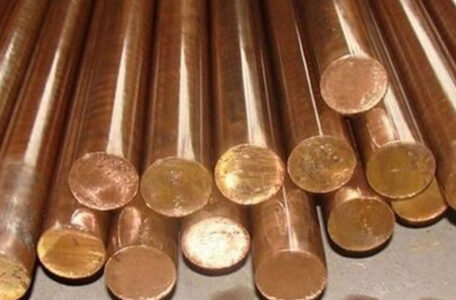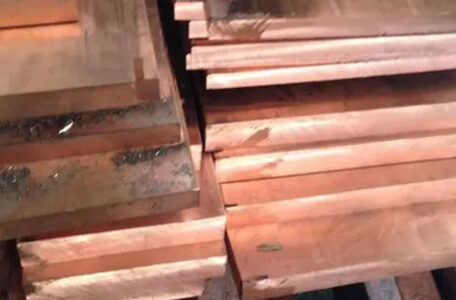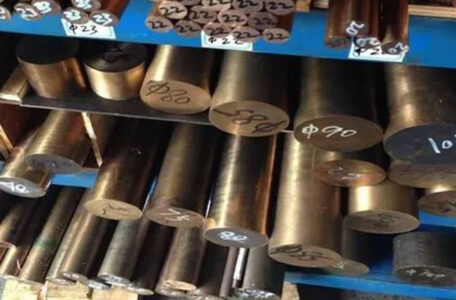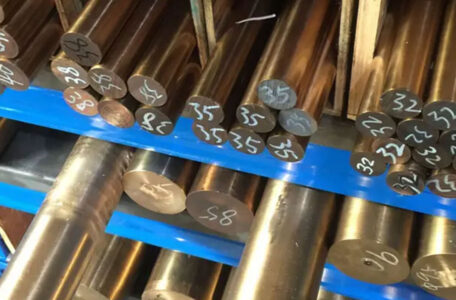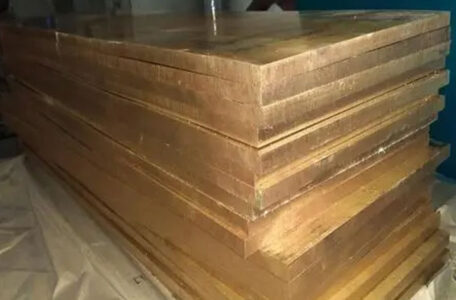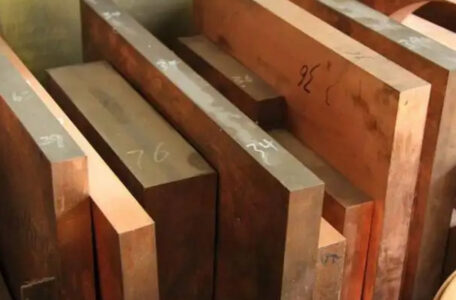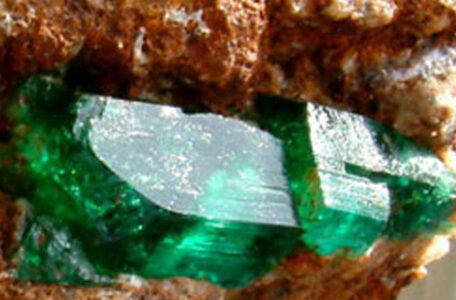Metals have been an integral part of human civilization for centuries, serving as essential materials in various industries and applications. Copper, a widely known and utilized metal, has long been valued for its conductivity and malleability. However, in certain specialized fields, the emergence of Beryllium Copper (BeCu) has presented a fascinating alternative due to its unique properties. This article delves into the comparative analysis between Beryllium Copper and its conventional counterpart, Copper, elucidating their differences, applications, and significance in diverse industries. Understanding Copper: Copper, with its reddish-orange hue, has been cherished by civilizations for millennia. Its high thermal and electrical conductivity have rendered it invaluable in electrical wiring, plumbing, and Read more
As a new material, beryllium has been paid more and more attention, and beryllium is an indispensable and valuable material in atomic energy, rocket, missile, aviation, aerospace and metallurgical industry. Among all metals, beryllium has the strongest ability to transmit X-rays, and is called metallic glass, so beryllium is an irreplaceable material for making small windows of X-ray tubes. Beryllium is the treasure of atomic energy industry. In atomic reactors, beryllium is a neutron source that can provide a large number of neutron shells (hundreds of thousands of neutrons can be generated per second); beryllium has a strong deceleration effect on fast neutrons, which can make the fission reaction continue. Read more
In the periodic table, beryllium is in a diagonal position with aluminum in group IIIA, and their properties are very similar. The standard electrode potentials are similar: they are all active metals. They are all oxygen-loving elements, and the metal surface is easy to form an oxide protective film, which can be passivated by concentrated HNO₃. Both are amphoteric metals. Hydroxides are also amphoteric. Both BeO and Al2O3 oxides have high melting points and high hardness. Both BeCl2 and AlCl3 are electron-deficient covalent compounds that form polymeric molecules through bridging bonds. Beryllium salts and aluminum salts are easy to be hydrolyzed, and the hydrolysis is acidic. Beryllium carbide Be2C, like Read more
Beryllium, like lithium, forms a protective oxide layer in the air, so it is stable even when it is red hot in the air. Insoluble in cold water, slightly soluble in hot water, soluble in dilute hydrochloric acid, dilute sulfuric acid and potassium hydroxide solution to release hydrogen. Metal beryllium has significant corrosion resistance to oxygen-free sodium metal even at higher temperatures. Beryllium is in the +2 valence state and can form polymers as well as a class of covalent compounds with significant thermal stability. Anomalous Properties Of Beryllium The valence electron shell structure of Be atom is 2s2, its atomic radius is 89pm, the Be2+ ionic radius is 31pm, Read more
CB/T 3900-1999 Copper-cobalt-beryllium (CuCo2Be) alloy welding electrodes GB/T 12714-2009 Americium Beryllium Neutron Source GB 24459-2009 Beryllium copper alloy explosion-proof tools GB/T 26056-2010 Vacuum hot pressing beryllium material GB/T 26063-2010 Beryllium Aluminum Alloy GB/T 26313-2010 Beryllium Bronze Seamless Pipe GB 8161-1987 Hygienic standard for beryllium in drinking water sources GBZ 67-2002 Diagnostic criteria for occupational beryllium disease SJ 20900-2004 Specification for beryllium oxide ceramic cylinders for microwave tubes SJ 20867-2003 Specification for beryllium oxide powder materials for electronic ceramics YS/T 221-2011 Metal beryllium beads YS/T 260-2004 Copper beryllium master alloy ingot YS/T 323-2012 Beryllium bronze sheet and strip YS/T 334-2009 Beryllium bronze round bar YS/T 41-2005 Beryllium flakes YS/T 425-2000 Antimony Read more
Beryllium Poison And Industrial Hygiene Beryllium and its compounds are toxic to the human body and are one of the most toxic elements. Industrial hygiene and environmental protection of beryllium operations must meet safety standards. Beryllium Poisoning Recognition Process In 1933, Germany first reported the poisoning of workers exposed to beryllium compounds, and in 1942, it was reported that workers exposed to beryllium silicate and beryllium hydroxide were poisoned by beryllium. The United States first put forward the report of beryllium poisoning in 1943, and implemented the occupational beryllium poisoning patient registration system in 1951. By the end of 1977, 887 cases had been registered. Western countries have also reported Read more
At present, only a few companies in the world extract beryllium oxide from ores, such as China (such as Shuikoushan No. 6 Plant), Brash Wellman Company in the United States, and Urbinsky Metallurgical Plant in Kazakhstan. , the main production methods are sulfuric acid method and fluorination method The Sulfuric Acid Method For Berylium The sulfuric acid method is still one of the widely used methods in the production of modern beryllium hydroxide and beryllium oxide. The acid-soluble metal enters the solution phase, and is preliminarily separated from gangue minerals such as silicon, and then the beryllium-containing solution is purified to remove impurities, and finally a qualified beryllium oxide (or Read more
The Physical Properties Of Beryllium Beryllium is a light and rare metal with a small atomic number and low density (only 1.847g/cm³), which is about 2/3 of aluminum and 1/2 of titanium. The melting point b is higher (1283 ℃). Beryllium is α-Be at room temperature and has a close-packed hexagonal structure; at 1254 °C, a phase transition occurs and it is a β-Be structure. Beryllium has the largest heat capacity of all metals. With a specific heat capacity of 1.8828 J/gK at room temperature, beryllium absorbs more heat than other metals, and this property is maintained until its melting point. The thermal conductivity of beryllium at room temperature is Read more
According to a report released by the United States Geological Survey (USGS) in 2015, the world’s proven beryllium resources are more than 80,000 tons, and 65% of the beryllium resources are non-granite crystalline rock deposits distributed in the United States. Among them, the areas of Gold Hill and Spor Mountain in Utah, and the Seward Peninsula in western Alaska are the areas where beryllium resources are concentrated in the United States. Beryllium is mostly produced by associated minerals, so there are many types of deposits, but there are three main types: Beryl-bearing granite pegmatite deposits are widely distributed, mainly in Brazil, India, Russia and the United States. The hydroxysilicon beryllium Read more
In 1828, metal beryllium was obtained by reducing beryllium oxide and beryllium chloride with metal calcium and potassium, respectively. In 1898, German chemist F. Wohler produced 99.5%~99.8% pure beryllium by electrolysis. Beryllium Name Origin Beryllium salt has a sweet taste and is called sweet soil, so the new element was first named “glutenium”, which comes from the French “glucose”, which means “glucose”. Later, because ytterbium salts were found to have the same sweet taste as beryllium salts, “acenaphthium” was renamed “beryllium”, which means “beryl” in Greek. The name “beryllium” was named by the German chemist F.Wohler. Beryllium Industry Development The metal beryllium tube has experienced a history of more than Read more
Wonder Copper LTD. is an established business that has been dedicated to service in the industry for over 30 years. Our team is composed of fully certified members in beryllium copper supply and other manufacturing service. We offer various design and manufac-turing services. We are also a state of the art machining facility that enables our company to deliver one stop full service.
